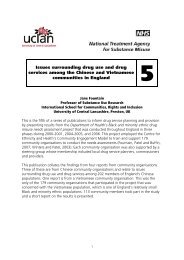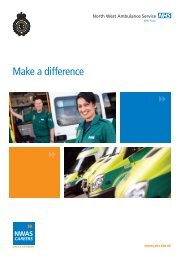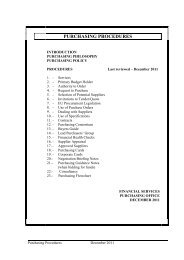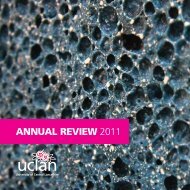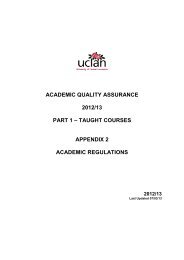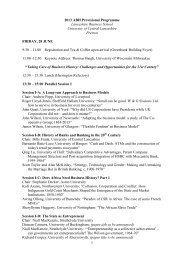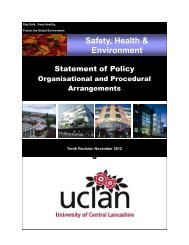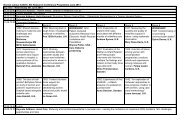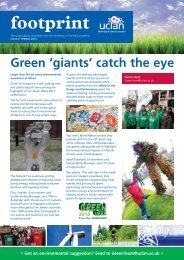Procedural Guidance for Hot Work - University of Central Lancashire
Procedural Guidance for Hot Work - University of Central Lancashire
Procedural Guidance for Hot Work - University of Central Lancashire
You also want an ePaper? Increase the reach of your titles
YUMPU automatically turns print PDFs into web optimized ePapers that Google loves.
CONTROLLED DOCUMENT<br />
the precautions that should be taken be<strong>for</strong>e the work starts; during the<br />
work; and on completion <strong>of</strong> the work;<br />
the person in direct control <strong>of</strong> the work.<br />
It is essential that all those involved in the work are aware that conditions may change<br />
once a permit to work is issued. If this occurs, <strong>for</strong> example if other work is to be<br />
carried out in the vicinity, the permit to work should be withdrawn, the situation<br />
reviewed and, if appropriate, a new amended permit to work issued. If the timescale<br />
<strong>of</strong> changes can be <strong>for</strong>eseen, the period <strong>of</strong> validity <strong>of</strong> the permit to work should be<br />
correspondingly limited. This may well be less than the full duration <strong>of</strong> the proposed<br />
work.<br />
Regardless <strong>of</strong> the location or type <strong>of</strong> area all hot work must be inspected be<strong>for</strong>e work<br />
starts and a ‘<strong>Hot</strong> work Permit’ (appendix 1) issued be<strong>for</strong>e work commences.<br />
7.3 Precautions <strong>for</strong> <strong>Hot</strong> <strong>Work</strong>.<br />
Minimum safety standards include:<br />
combustibles must be moved at least 35 feet away;<br />
flammables must be moved at least 50 feet away;<br />
two fire extinguishers (suitable <strong>for</strong> the area) must be on the site;<br />
a fire watch is required on every job;<br />
the fire watch must stay on the job site <strong>for</strong> 30 minutes after the hot work<br />
is finished.<br />
Every year major fires occur due to hot particles generated by cutting or welding<br />
operations igniting combustible materials. Where it is not practicable to remove such<br />
materials, e.g. <strong>for</strong> very short maintenance operations, it may be sufficient to ensure<br />
that they are temporarily covered by non-combustible material. This will be<br />
determined by a risk assessment <strong>of</strong> the area and the task to be per<strong>for</strong>med. Personal<br />
Protective Equipment (P.P.E) and or other risk controls identified in the risk<br />
assessment must be implemented.<br />
No hazardous or combustible materials (e.g. flammable, toxic, very hot,<br />
steam, or very cold) must enter the hot work area during the operation<br />
unless they are needed as part <strong>of</strong> the operation and considered in the risk<br />
assessment;<br />
The atmosphere must be, and must remain, safe to breathe. The<br />
concentration <strong>of</strong> toxic substances should be as low as reasonably<br />
practicable and in all cases below the relevant occupational exposure limit.<br />
Many hot work processes generate toxic fumes (see 6.4), where it is not<br />
reasonably practicable to provide adequate ventilation appropriate<br />
respiratory protective equipment should be worn. Particular care should be<br />
taken be<strong>for</strong>e entry into enclosed spaces;<br />
Any other necessary personal protective equipment must be provided and<br />
worn. This may include protective footwear, overalls, gloves and eye<br />
protection;<br />
S:\FM_HSE\HSEO\h&sdocuments\FM SHE 004 <strong>Hot</strong> <strong>Work</strong>.docPage 6 <strong>of</strong> 8



